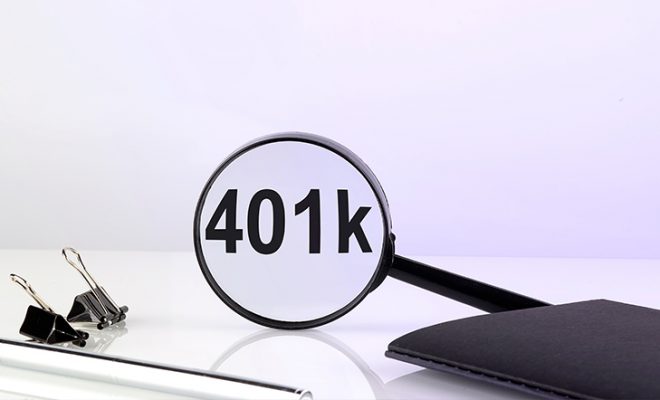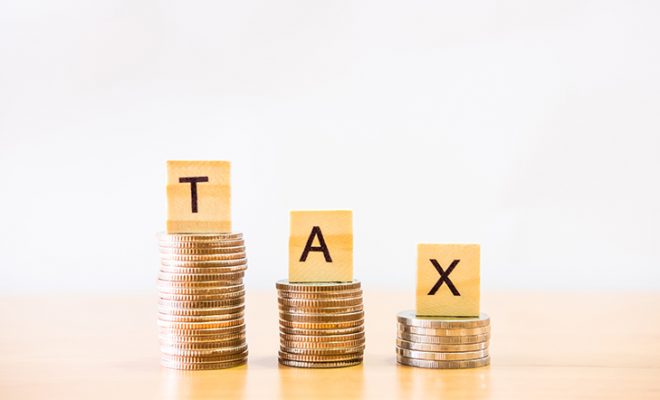What Millennials Should Rethink About Their Retirement Plans

Retirement has evolved radically. What used to be a well-defined finish line marked by pensions, gold watches, and full Social Security benefits is now a blurry, shifting target.
And for millennials?
It’s an entirely different playing field.
Unlike previous generations, millennials are entering mid-career life amid skyrocketing living costs, volatile markets, and the largest generational retirement wave in U.S. history, known as “Peak 65”. That means millions of Baby Boomers are retiring every year, reshaping the economy, the job market, and the future of entitlement programs such as Social Security.
Millennials are also living longer, saving later, and navigating unprecedented disruptions, from student debt to the gig economy. Many watched their parents retire too early or too late. They’ve seen market crashes and housing bubbles. And now, they’re asking questions like:
- “Will I have enough?”
- “Is $3 million enough to retire at 65?”
- “Are my savings built to last?”
- “Am I even using the right vehicles?”
These aren’t casual questions. The answers determine whether you’ll retire comfortably or work longer than you want to.
So let’s not sugarcoat it. This isn’t another blog nudging you to “start saving early” or “cut back on lattes.” You know that already. What you need isn’t generic advice; it’s a well‑defined strategy.
So what exactly needs rethinking?
Start with the benchmarks. That tidy savings number you’ve been hearing: $3 million by 65? It’s not a magic number. For some, it might be overkill. For others, it might fall painfully short.
Then there’s the way you’re saving.
Are you relying too heavily on traditional 401(k)s? Are your assets placed in the right types of accounts, or are they simply in the most convenient ones? And what about taxes?
While most millennials are accumulating wealth, they may not be doing so in a strategic way.
The truth is, a lot of retirement advice floating around wasn’t designed for your generation. It was built for a world of pensions, stable inflation, and guaranteed Social Security. That world doesn’t exist anymore.
If you want a retirement that’s financially secure, tax-efficient, and truly flexible, you’ll need to rethink more than just your savings target.
Let’s break it down.
The $3 million goal: Is it enough to retire at 65?
Let’s start with the benchmark that often arises in most retirement planning conversations: $3 million.
It sounds massive. Intimidating, even. But in practical terms?
Using the well-known 4% rule, $3 million gives you about $120,000 a year in retirement income. With smart withdrawals and some market tailwinds, that income can stretch for 30 years or more.
Sounds solid, no? Until you take a step back and look at the entire picture.
Because that number assumes a best-case scenario:
- No major health events.
- No prolonged inflationary periods.
- No sequence-of-returns risk from early market downturns.
- No unexpected family responsibilities are draining your reserves.
Now layer in some millennial realities:
- Healthcare expenses for a retired couple can easily exceed $300,000, and that’s before long-term care.
- Many millennials will likely live long (thanks to advancements in healthcare), which stretches the retirement window.
- The market? Historically, the market crashes every 8 to 10 years.
- And Social Security? With Peak 65 draining the system, benefit cuts or delays are a very real possibility.
So, is $3 million enough to retire at 65?
For some, absolutely. However, for others, especially those eyeing a longer, more active retirement with travel, side ventures, or generous lifestyle upgrades, $3 million might just be the starting point, not the finish line.
What to do instead?
Instead of chasing a fixed number, rethink how you measure readiness:
- Run scenario-based models. Don’t just plug in one retirement age and rate of return. Simulate downturns, early retirement, delayed withdrawals, inflation spikes, and healthcare shocks to prepare for potential financial challenges.
- Get brutally honest about your expected lifestyle. If your annual expenses are projected to exceed $ 100,000, then $3 million may leave you vulnerable over time.
- Start adjusting now. Not when you’re five years away from retirement. Course corrections made in your 40s are infinitely more powerful than last-minute scrambles at 60.
In short, don’t get fixated on $3 million. Get focused on what that $3 million needs to do for you, your future lifestyle, and the full span of your retirement timeline.
Rethink how (and how much) you’re saving for retirement
Here’s where most millennials fall behind: they underestimate how much they’ll need and delay optimizing contributions.
According to financial advisors, one of the most straightforward yet most overlooked tactics is auto-escalation. That means, let your 401(k) or employer-sponsored retirement plan increase your contribution by 1% every year, automatically. It’s painless, habit-forming, and incredibly effective over time. If your employer offers a match and you’re not hitting the cap, that’s free money left on the table.
For those self-employed or with fluctuating income streams, the approach needs to be more hands-on:
- Set calendar reminders every 6 months.
- Define a “profit-take” percentage (say 10 to 15%) from windfall months.
- Funnel those into SEP IRAs, solo 401(k)s, or other qualified retirement vehicles.
Prepare for a different Social Security reality
Let’s talk about the elephant in the room. Social Security will not look the same for you as it did for your parents.
We’ve officially hit Peak 65, the point where more Americans are turning 65 every day than ever before in history. It’s a demographic tidal wave, and the implications for entitlement programs are enormous. Social Security, already under stress, is being pulled in every direction.
And millennials?
You’re last in line.
This isn’t fear-mongering; it’s simply fiscal math. The system was designed for shorter life spans, higher birth rates, and fewer retirees per worker. None of those dynamics hold anymore. As early as 2034, current projections suggest the Social Security trust fund could become depleted, resulting in automatic benefit cuts of up to 20%.
You don’t need to panic. However, you do need to plan as though the safety net might not fully catch you.
Here’s how to do that smartly:
- Delay Social Security until age 70 if your health and finances allow. For every year you wait past full retirement age, your benefit increases by roughly 8%. That’s one of the few guaranteed returns left in retirement planning.
- Build multiple personal income streams, from Roth accounts, brokerage investments, rental income, or even annuities. The more you generate on your own, the less you’ll depend on government payouts that could shift beneath your feet.
- Stress-test your plan. Run projections that assume partial or delayed Social Security. What if you received only 70% of your expected benefit? Would your current savings and withdrawal strategy hold?
Think of Social Security not as your retirement foundation, but rather as just one small support beam. The real structure needs to come from you.
Create tax-efficient retirement strategies early
The rich don’t retire rich by accident. They know where to place their money and how to protect it from taxes.
Here’s the trick: it’s not just about how much you save. It’s where and how you save it.
Let’s look at five key “buckets” that form the foundation of creating tax-efficient retirement strategies:
| Bucket | Examples | Tax Treatment |
| Pre-tax | 401(k), traditional IRA | Tax-deductible now, taxed later |
| Roth | Roth IRA, Roth 401(k) | Taxed now, tax-free later |
| Taxable | Brokerage accounts | Capital gains + dividend tax |
| HSA | Health Savings Account | Triple tax-free for healthcare |
| Annuities | Fixed/Variable | Tax-deferred until withdrawal |
What can you do?
- Max out employer-sponsored accounts.
- Use Roth conversions strategically, especially in lower-income years.
- Store bond-heavy or dividend-yielding assets in tax-sheltered accounts.
- Invest tax efficiently in taxable accounts (think ETFs or growth stocks).
- Max out HSAs and treat them as stealth retirement vehicles.
This kind of diversification is what defines high-net-worth retirement strategies. It gives you control when tax brackets change (and they will).
Prioritize asset location over allocation because taxes eat more than you think
You’ve probably heard all about asset allocation, the classic 60/40 portfolio split, and how to diversify across stocks, bonds, and cash. It’s important. Here’s the truth most retirement strategies gloss over: allocation alone isn’t enough.
What gets overlooked?
Asset location.
And if you’re not thinking about it, you’re probably paying more in taxes than you need to, year after year.
Asset location refers to where you hold each type of investment, based on its tax treatment. Two people with the same, exact portfolio can end up with very different outcomes depending on how their assets are distributed across account types.
Let’s get into the nitty-gritties:
- Keep tax-inefficient assets, such as REITs, high-yield bonds, or actively managed funds that generate substantial taxable income, inside tax-deferred accounts like traditional IRAs or 401(k)s. These vehicles shield you from annual tax drag.
- Place tax-efficient assets like index ETFs or buy-and-hold stocks into your taxable brokerage accounts. These generate minimal capital gains and qualify for favorable long-term rates.
- Use Roth accounts for your highest-growth assets. Why? Because every dollar of appreciation in a Roth can be withdrawn completely tax-free. This is where your aggressive plays and long-term winners belong.
When done right, asset location can boost your after-tax return by as much as 0.5% to 0.75% annually. That may not sound much until you compound it over 25 years.
It is among the simplest yet most effective ways to implement tax-efficient retirement strategies without altering your underlying investments.
So yes, diversify your assets. Just as importantly, diversify your account types and be intentional about where each goes. After all, ‘what you keep’ matters more than ‘what you earn’.
Rebalancing, harvesting, and withdrawal timing
Now that you’ve built a smart portfolio, protect it from inefficiencies.
Annual rebalancing is essential; however, doing it in taxable accounts can trigger capital gains. So what’s the workaround?
- Offset gains with tax-loss harvesting and sell underperforming assets to capture the loss.
- Harvest selectively and reinvest in similar, yet not identical, assets to comply with wash-sale rules.
- During retirement, it is generally advisable to withdraw funds from taxable accounts first, then from pre-tax accounts, and finally from Roth accounts, unless specific tax considerations or income requirements dictate otherwise.
In other words, don’t just plan your savings. Plan your withdrawals with equal care.
Add protection with insurance and healthcare planning
You can have the perfect portfolio and still get blindsided. Unexpected healthcare costs remain one of the biggest threats to retirement stability, and they don’t wait politely until age 85.
Even with Medicare, significant gaps remain. Dental? Not covered. Vision? Also no. Long-term care? Barely. And that’s assuming your health remains relatively stable.
That’s why thoughtful retirement planning includes a layer of risk protection, starting with healthcare.
Enter the Health Savings Account (HSA). If you’re enrolled in a high-deductible health plan (HDHP), this is a powerful all-in-one account with tax-free benefits. It’s the only account that offers triple tax benefits:
- Pre-tax contributions
- Tax-free growth
- Tax-free withdrawals for qualified medical expenses
Use it wisely. HSAs can cover:
- Medicare premiums once you hit age 65.
- Dental, vision, and out-of-pocket medical expenses.
- Long-term care insurance premiums (that are rising rapidly).
But medical costs aren’t the only risk. As you accumulate wealth, you’ll want to shield your assets from other unexpected events:
- Term life insurance during your earning years can protect your family or dependents from financial shocks if something happens to you.
- Long-term care insurance (if purchased before age 60) can help preserve your nest egg if you ever need assisted living, in-home care, or a nursing facility.
- Umbrella liability insurance can add an extra layer of protection for high earners with homes, cars, or rental properties, especially in today’s litigious environment.
Tax planning and investment returns matter. But so does keeping what you’ve built safe from the unpredictable. And that’s the real formula here:
Tax efficiency + risk mitigation = long-term resilience
Reconsider your response to headlines
Let’s be blunt: market crashes don’t sink retirements, panic does.
Fear of missing out. The impulse to “move to cash.” The temptation to chase headlines or dump a stock the moment it drops. These are all behavioral traps that can derail otherwise solid retirement plans more than taxes, fees, or even inflation.
And millennials?
You’re especially susceptible.
A recent Allianz study found that 66% of millennials fear outliving their savings more than dying. Let that sink in.
It can be a powerful motivator, yet it also carries significant risk. That kind of fear can lead to overcorrections, chronic anxiety, and bad financial decisions made in emotional moments.
Here’s how to stay grounded:
- Build a 6 to 12-month emergency fund to cover unforeseen expenses and offer financial peace of mind.
- Don’t check your portfolio every day. Your investments are long-term tools, not a dopamine machine. Schedule reviews at least quarterly or monthly.
- Work with a financial advisor who acts as a buffer between you and the financial markets. When markets wobble (and they always do), your advisor can be your voice of reason, your filter, and your calm.
Make room for annuities, but use them wisely
Annuities often have a bad reputation, and not always unfairly so. Some are high-fee, opaque, and sold too aggressively. When used with intention, they can play a decisive role in building a secure retirement strategy.
Here’s what makes them valuable: They’re one of the few financial instruments that offer guaranteed income for life, regardless of how long you live or what the market does.
Take the deferred fixed annuity, for example:
- It provides predictable, stable payouts.
- It helps hedge against market volatility in your later years.
- It reduces the burden on your other accounts by limiting the need for systematic withdrawals.
That doesn’t mean annuities should be your entire retirement plan. For those approaching retirement and concerned about outliving their assets, they can serve as a financial backstop.
For higher earners exploring high-net-worth retirement strategies, it’s worth looking at:
- Hybrid annuities that combine income guarantees with market upside.
- Laddered annuity structures to stagger income across phases of retirement.
- Annuities paired with Roth conversions to diversify your tax exposure.
In the right hands, annuities don’t limit freedom; rather, they offer peace of mind..
Define what retirement means to you
For Boomers, retirement was the end of the line. Clock out. Collect your pension. Downsize your life.
For millennials, retirement is starting to look more like a transition than a destination.
You might not stop working at 65. You might freelance part-time. Launch a second career. Travel for months at a time. Volunteer. Write a book. Grow a vineyard. (Seriously.)
Millennials are far more likely than their parents to:
- Freelance or consult in retirement
- Pursue the passion projects they postponed in their 30s
- Volunteer or travel extensively, often with a purpose
- Launch encore careers that are more about meaning than money
Which means your financial plan can’t just ask, “Can I afford to stop working?”
It has to ask:
“What do I want to do when I no longer have to work?” “What does freedom look like for me?”
Align your investment, income, and risk strategies around that answer because retirement is ultimately about the life you’ve planned to enjoy.
The bottom line: Rethink now so you can relax later
The old playbook is broken. Millennials face longer retirements, greater uncertainty, and more complex financial decisions than any previous generation. But that’s not a reason to panic. It’s a call to get smarter.
You need to build layered wealth, not just in terms of size, but also in structure. You also need to think beyond accumulation. The decumulation phase, how you withdraw and when, has just as much bearing on your outcomes.
And you don’t have to do it alone. A fiduciary financial advisor can help tailor your approach to optimize taxes, achieve income flexibility, and ensure long-term sustainability. If you’re serious about creating secure retirement strategies that are personalized, tax-smart, and built to last, consulting a financial advisor may be the smartest move you make.
Consider using our free advisor match tool to connect with 2 to 3 seasoned financial advisors who can help you plan your retirement better.










